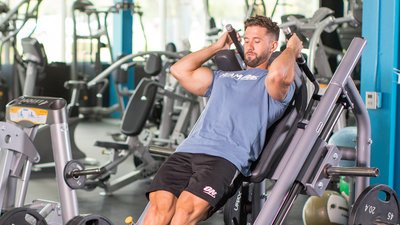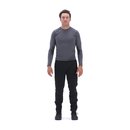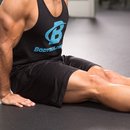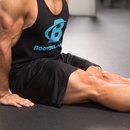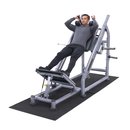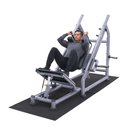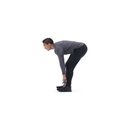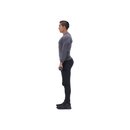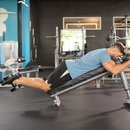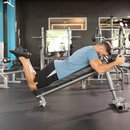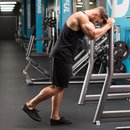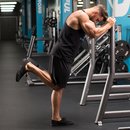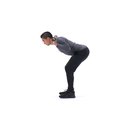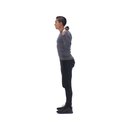With a nickname like "The Quad Guy," Optimum Nutrition-sponsored athlete Julian Smith has a lot to live up to when it comes to leg workouts.
This master of slow, controlled lifts and old-school bodybuilding techniques understands that, when it comes to legs, it's all about quality over quantity—and his workout does not disappoint.
"The key is slowing things down," says Smith. "Working on keeping good form and making sure the muscles are getting everything out of each rep."
From old-school sissy squats to muscle-isolating contraction exercises, Smith has the completely balanced leg workout you can take to any gym.
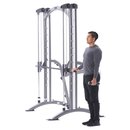
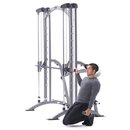
Sissy Squat
Smith starts his leg workout with—you guessed it—quads. As he discussed in his previous article on slow negatives, Smith loves the Smith machine because it allows him to get into more intense quad- or glute-focused positions beyond what a normal barbell can do.
"Make sure you are fully warmed up before performing this movement," Smith cautions. "This is as old-school as it gets when it comes to quad training."
The Smith machine sissy squat is pure isolation for the quads. If you look at the position your legs are in at the bottom of the movement, the full stretch resembles the leg extension.
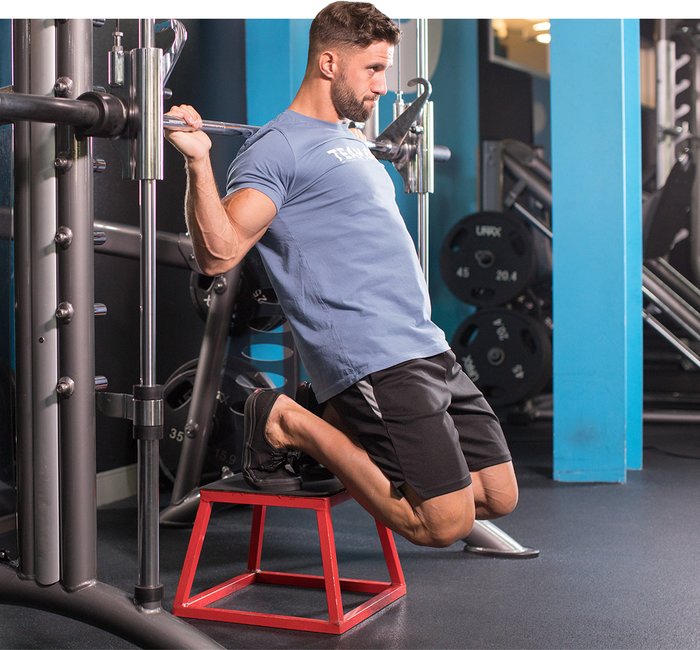
In addition to completing a good warm-up, Smith recommends strict adherence to proper form. To target your quads, keep your upper leg and torso in line as you lower your body. If you're not comfortable performing this movement on a bench, like Smith does, stand on a small box or step to start until you grow more comfortable.
Keep your hips forward throughout the movement so when you come up, you directly work your quads. Perform four sets to failure, focusing on form and technique the entire time.
Close-Stance Barbell Squat
The barbell squat is a classic total-leg exercise, but Smith shifts it to a quad-dominant movement by moving his feet close together and focusing on contracting the quads as he lifts the bar.
"Not a lot of people have the range of motion or the flexibility to do something like this," Smith explains, "so just make sure you have good form. Start out light before you get into the heavier sets."
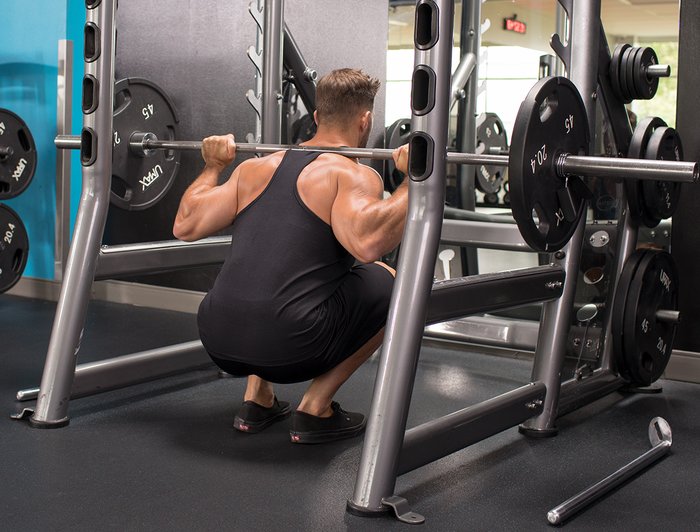
If you're wondering how this guy with chiseled quad sweeps and impressive hamstrings became so flexible, you're not alone.
"A lot of people ask about my mobility training and how I became so flexible," says Smith. "Well, throughout my workout I sit in the full extension of the sissy squat, stretching my quads while I rest. It keeps me fresh for what I'm about to do and prepares my body for the exercise."
Smith's mobility certainly pays off in the close-stance barbell squat. He recommends 4 sets of 6-8 reps for this exercise, stretching for 1-2 minutes in between each set.
Seated Quad Contraction
It may not be a flashy exercise, but if there's one technique that sets this "Quad Guy" apart from the competition, it's his use of flexing and contracting to build and sculpt muscles.
The seated quad contraction is exactly that: sitting down and squeezing your quads as hard as you can for 10 seconds at a time. Smith points out this is not the same as locking your legs out, because that would put too much pressure on your joints.
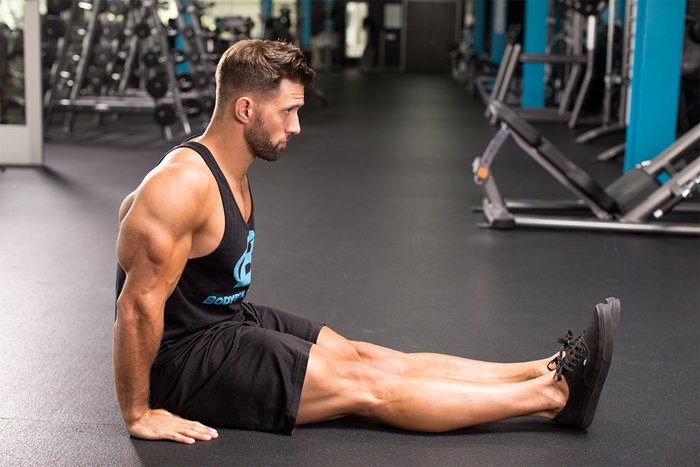
"It's the same concept as flexing your arm, but in your quads," explains Smith.
Perform 4 sets of 4 reps, holding each rep for 10 full seconds of contraction. Do this right and your quads will burn unlike anything you've ever felt before. No wonder he's known for his legs!
Hack Squat
The hack squat resembles the leg press in that you have a platform on which you can position your feet to change the angle of the lift to target different muscle groups. To make this a quad-dominant exercise, Smith positions his feet at the bottom of the platform, heels together, toes slightly turned out.
"As we push up we're going to push through the outer part of the quad," he says. "That's going to put a lot of focus on the outer sweep."
Once again, flexibility comes into play. Smith has the range of motion to drop his hips all the way down to where his heels start to come off the platform, which is normal for this exercise. But if you experience pain, or your lower back comes off the pad when you try to go all the way down, limit your range of motion and work on your flexibility.

Smith points out you don't always need to load up the weight to get the pump you seek.
"The hack squat that I'm using today had a lot more weight than I'm used to," said Smith, "so I went with no weight. That's something people need to realize when they go into the gym: All machines are different; all equipment is different. Make sure you use the equipment that works best for you."
Smith recommends 4 sets of 6-12 reps, working up to a comfortable range of motion for your flexibility level.
Stiff-Legged Deadlift
Switching to hamstrings, Smith kicks off the back half of this balanced leg workout with a classic hamstring exercise: stiff-legged deadlifts.
True to form, Smith adds his own flair to this exercise by placing his toes on a plate.
"Toes elevated makes the hamstring stretch even before you start the rep," he explains. "This makes the exercise more difficult and forces the muscles to lengthen and contract."
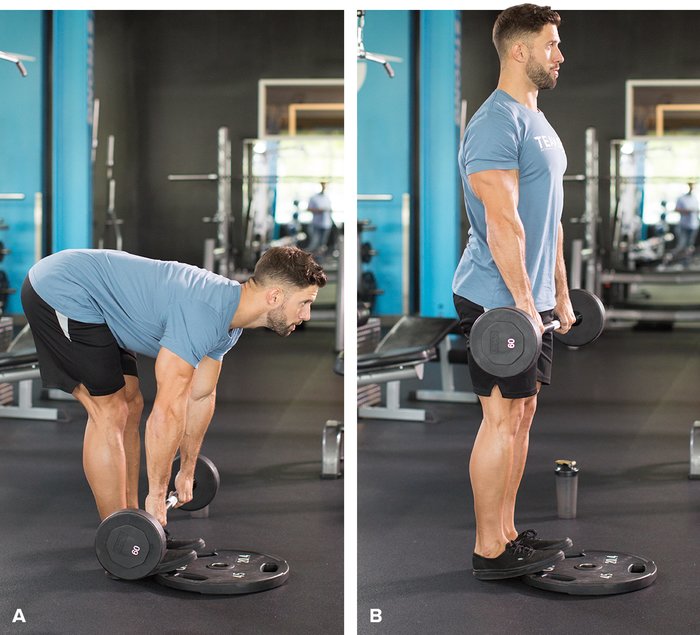
You can use a plate or small step to elevate your toes a few inches off the ground. Complete 4 sets of 12 reps, working in the same slow and controlled style as you did for the front of the legs.
Decline Dumbbell Leg Curl
This old-school exercise was invented before machines were widely available. The setup on this is a little more difficult, especially if you're by yourself. If you have a workout partner, ask them to place the dumbbell between your feet. To grab the dumbbell if you're by yourself, put your feet around the dumbbell and hold it as you lower yourself onto the bench.
This is a challenging isolation exercise when done correctly, so before you increase the weight make sure you're getting a full range of motion on the lift.
"You can change the angle of the bench to make it more difficult," says Smith. "If you're a beginner, start with a flatter angle. If you want to make it more advanced, raise the angle to a very steep incline and make the exercise much harder."
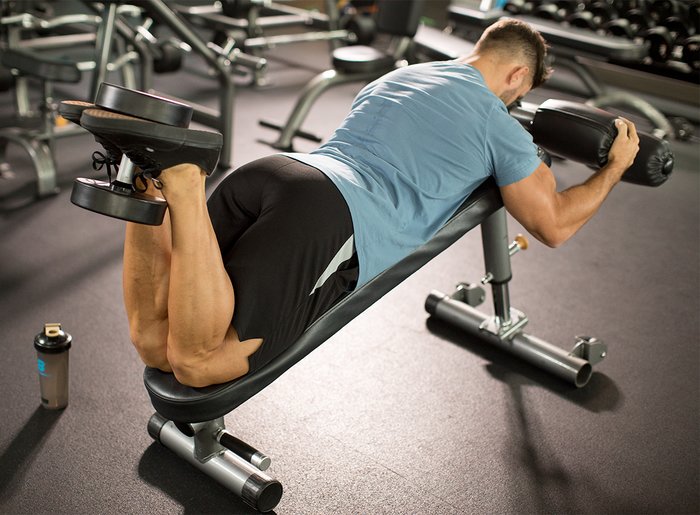
Isolate the hamstrings by keeping your hips down and eliminating all momentum, and complete 4 sets of 8 reps. For more tips on getting the most out of a prone hamstring curl, check out this guide on hamstring training.
Hamstring Contraction
Like the quad contraction in the first half of the workout, this hamstring variation is done while standing and mimics the motion of the standing single-leg hamstring curl.
When doing these contractions, imagine you are standing in the hamstring machine, and curl your heel up to your glutes as if you were pulling the weight up.
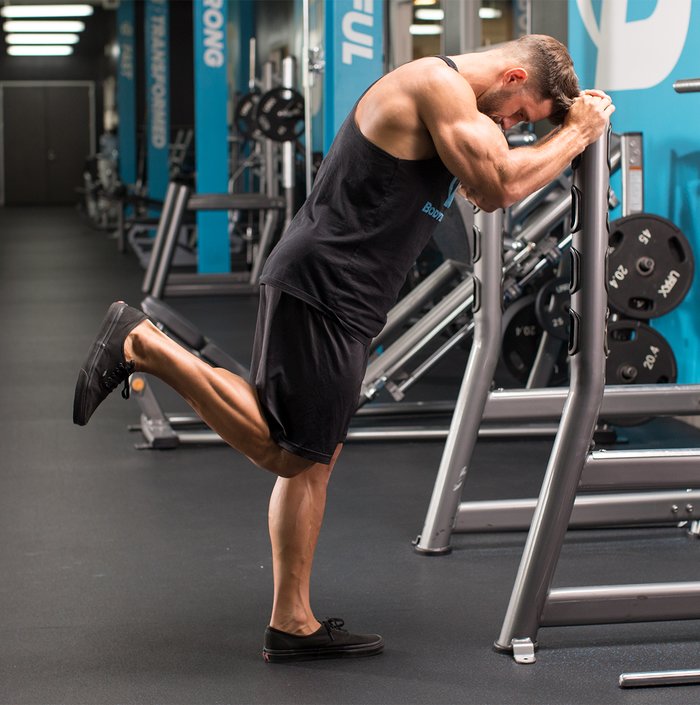
Hold each repetition for 4 seconds, completing all reps on one leg first before switching to the other. You can always stretch in between sets to work on improving hamstring flexibility and range of motion.
Good Morning
According to Smith, good mornings are "the squat of the hamstrings" and a great way to finish the workout. Barbell good mornings are a lot like the stiff-legged deadlift—your legs are straight but not locked out.
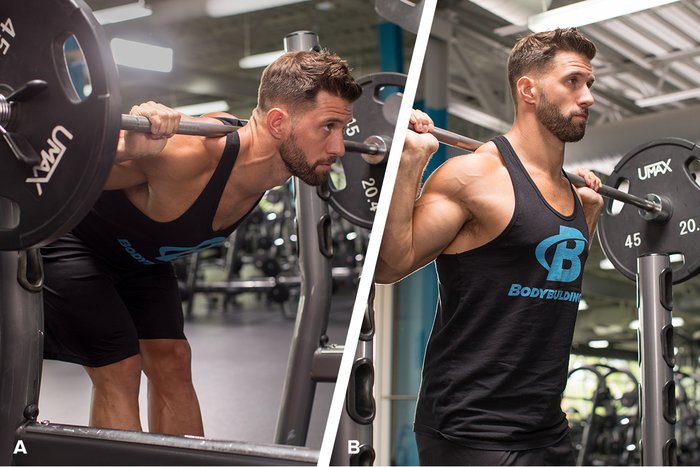
"It's the exact same hinging movement for the lower body," says Smith, "but instead of holding the weight in your hands, the bar sits across your shoulders like it would for a squat."
Lower the weight slowly, keeping your spine neutral and back flat. Achieve as much of a stretch in your hamstrings as you can handle, then contract and pull back up.
"This workout is something you can easily fit into your routine," says Smith. "The quads and hams are both hit equally. It's not more dominant on one or the other."

